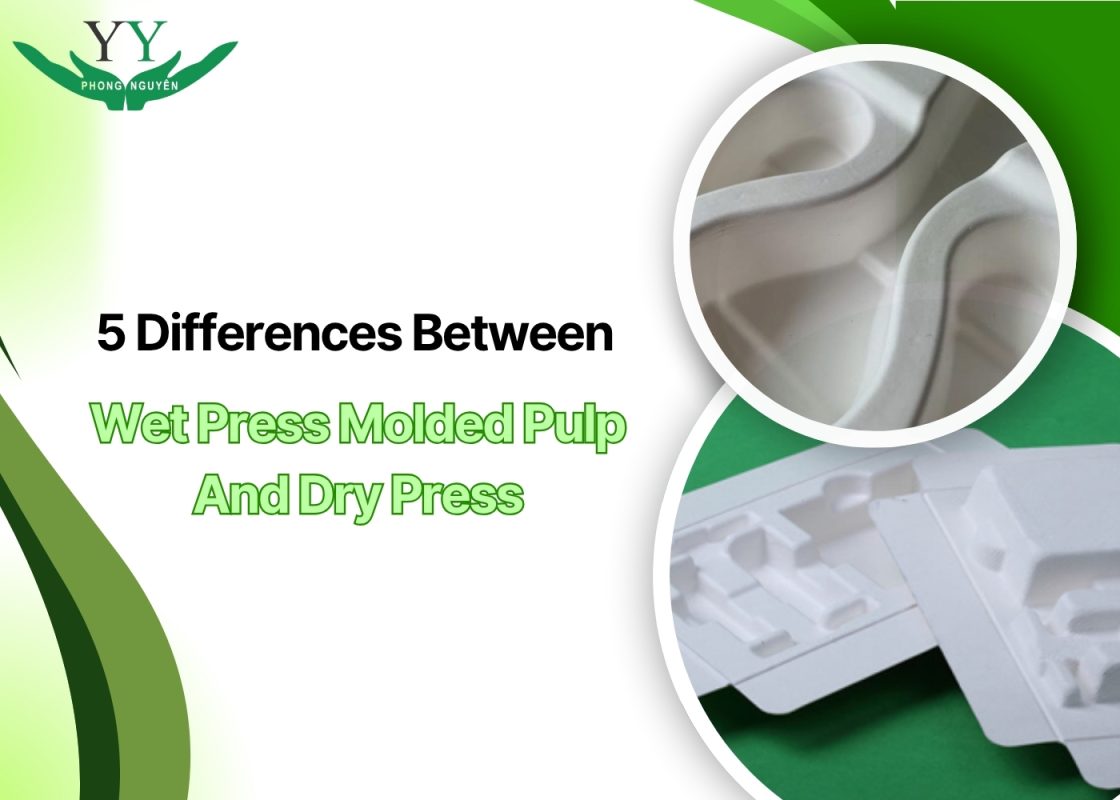When it comes to packaging production and recycled products, wet press molded pulp and dry press are two popular choices, each with its own advantages and limitations. So, what are the differences between these two types of molded pulp, and which one should you choose based on your needs? Let’s explore in detail in the article below to better understand these two types of molded pulp!
Characteristics of wet press molded pulp and dry press
Wet press and dry press molded pulp have distinct characteristics that significantly affect the quality, function, and application of the final product. Each type has a different manufacturing process, resulting in differences in the texture, durability, and cost-effectiveness of products made from these materials. Understanding these differences is important in selecting the appropriate pulp based on the specific requirements of the product.
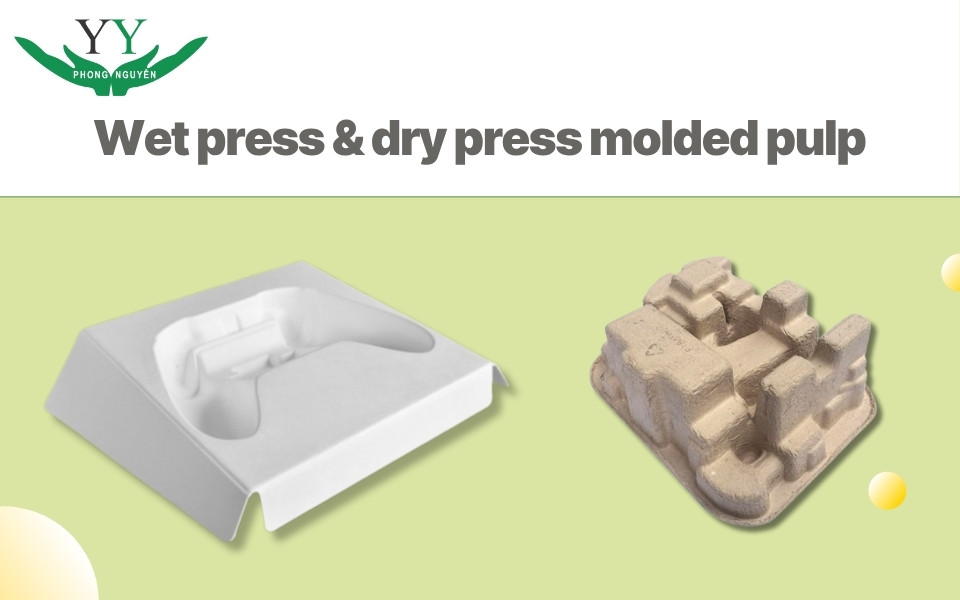
Wet press molded pulp
Wet press molded pulp is produced by using water and high pressure to create smooth and detailed products, making it suitable for packaging that requires high aesthetics and design precision.
Dry press molded pulp
Dry press molded pulp uses high pressure through specialized molds and pressing equipment to shape the pulp fibers. The surface of the product after pressing will have one rough side and the other side relatively smooth. Dry pressing is an ideal method for packaging designs with complex structures and those that require higher product protection features.
Comparison between wet press molded pulp and dry press molded pulp
When comparing wet press molded pulp and dry press molded pulp, it is essential to understand the production process, characteristics, and specific applications of each type.
| Criteria | Wet press molded pulp | Dry press molded pulp |
| Production process | Uses a lot of water and high pressure, creating smooth and detailed products. | It uses less water, a high temperature, and a shorter time. |
| Paper density | High density (1.2-1.4 g/cm³), resulting in smooth and detailed products. | Low density (0.7 – 1.0 g/cm³), producing lighter products with a rougher texture. |
| Drying time | Drying time ranges from 10 to 20 minutes. | Faster drying time, from 5 to 10 minutes. |
| Applications | Suitable for applications requiring high aesthetics, such as packaging for electronics, medical equipment, etc. | Suitable for food packaging, egg trays, etc. |
| Production efficiency | Takes more time and energy but provides a high finish and aesthetic quality. | Quick production process, energy-efficient, and low-cost, but with less aesthetic appeal. |
Production process
The production process of wet press molded pulp begins by mixing recycled paper fibers with a large amount of water, at a ratio of 95% water and 5% paper fibers. Once mixed, the mixture is in a liquid form, almost entirely water with a few paper fibers floating within. Next, the mixture is poured into molds and pressed with hydraulic machines to remove the water and create a smooth, detailed surface product. The product is then dried for 10-20 minutes depending on its thickness and complexity.
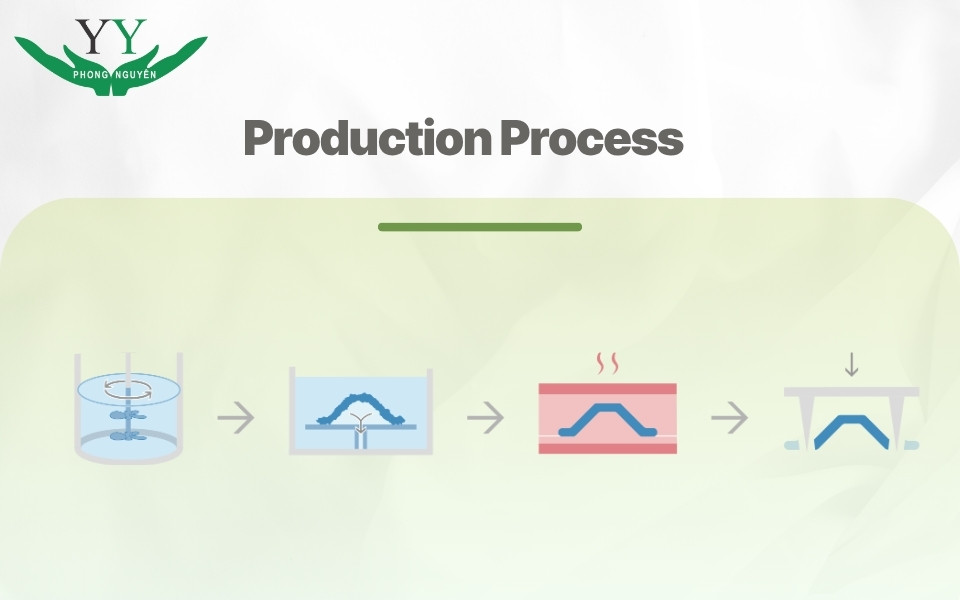
In contrast, the production process of dry press molded pulp uses a mixture of paper at a ratio of 60% water and 40% paper fibers. This mixture becomes denser and retains its shape when poured into the mold. After molding, the mixture is pressed at high temperatures up to 250°C to quickly solidify the pulp, resulting in a strong and durable product.
Paper density
Wet press molded pulp creates products with higher paper density, ranging from 1.2 to 1.4 g/cm³. This helps create smooth, solid, and more detailed products, ideal for protective packaging for electronics or high-end items.
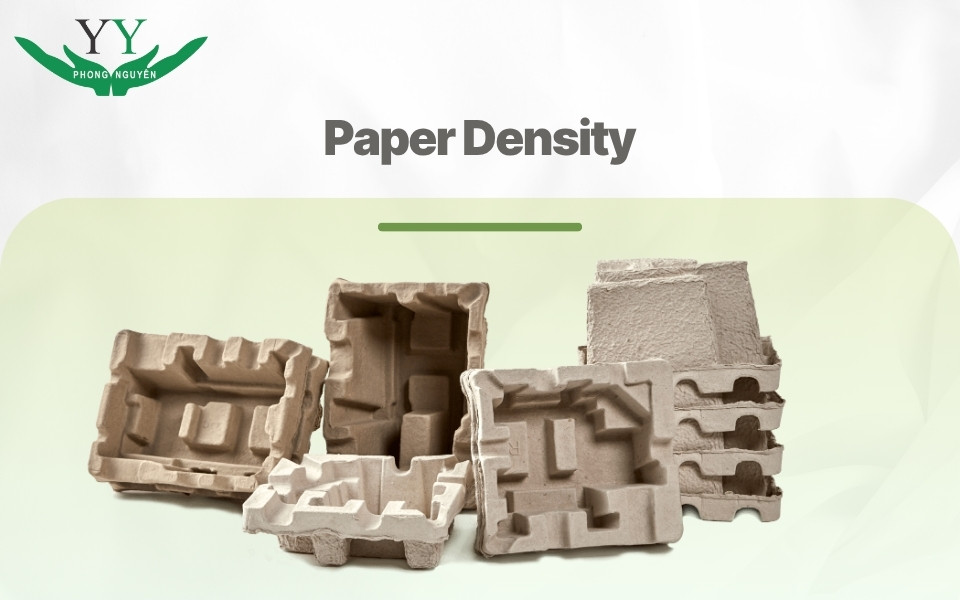
On the other hand, dry press molded pulp has a lower density, ranging from 0.7 to 1.0 g/cm³. As a result, products made from dry press molded pulp are lighter and have a rougher texture. While dry press molded pulp does not have as high a density as wet press, it offers advantages in terms of cost and production time.
Drying time
Wet press molded pulp has a longer drying time, ranging from 10 to 20 minutes per batch. The longer drying time ensures that the completed product retains its solid and intact structure, making it suitable for protecting fragile products such as electronics, glass, or other delicate items.
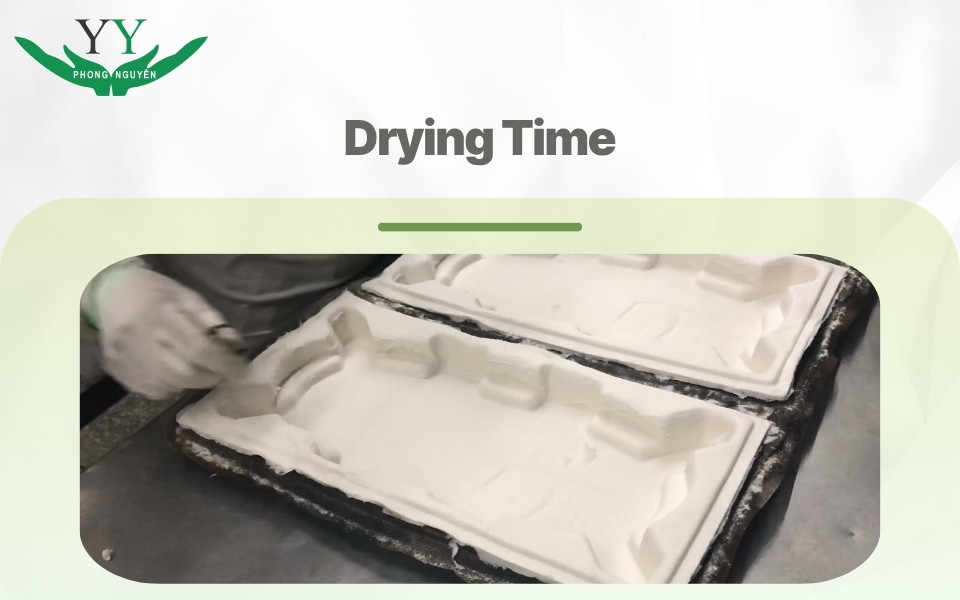
In contrast, the drying time for dry press molded pulp is only 5 – 10 minutes, twice as fast as wet press. Dry press molded pulp has high mechanical strength, can withstand impacts well, and endure harsh shipping conditions without damage. However, dry press molded pulp will have a rougher texture and less detail.
Applications
Wet press molded pulp is often used for packaging that requires high aesthetics and precise detail, such as protective packaging for electronics, laptops, smartphones, medical devices, etc.
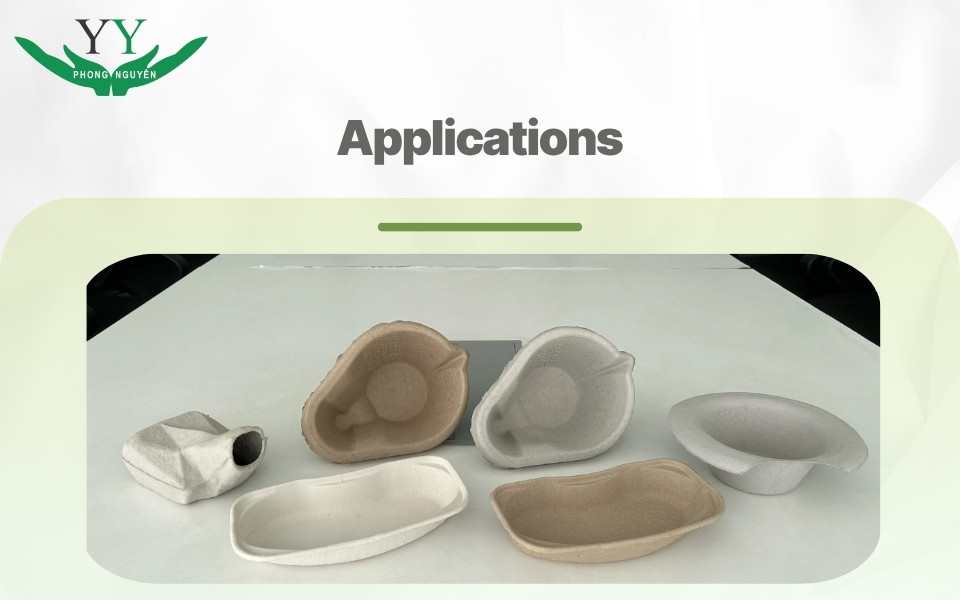
Meanwhile, dry press molded pulp is mainly used in products that require high durability but do not require aesthetic features. Typical applications of dry press molded pulp include disposable food packaging, egg trays, food containers, etc.
Production costs
Wet press molded pulp requires a complex production process, using a large amount of water and high pressure to create smooth and detailed products. This process takes a lot of time and energy, especially during the drying phase. The product after pressing also needs to be dried for an extended period, leading to higher electricity costs.
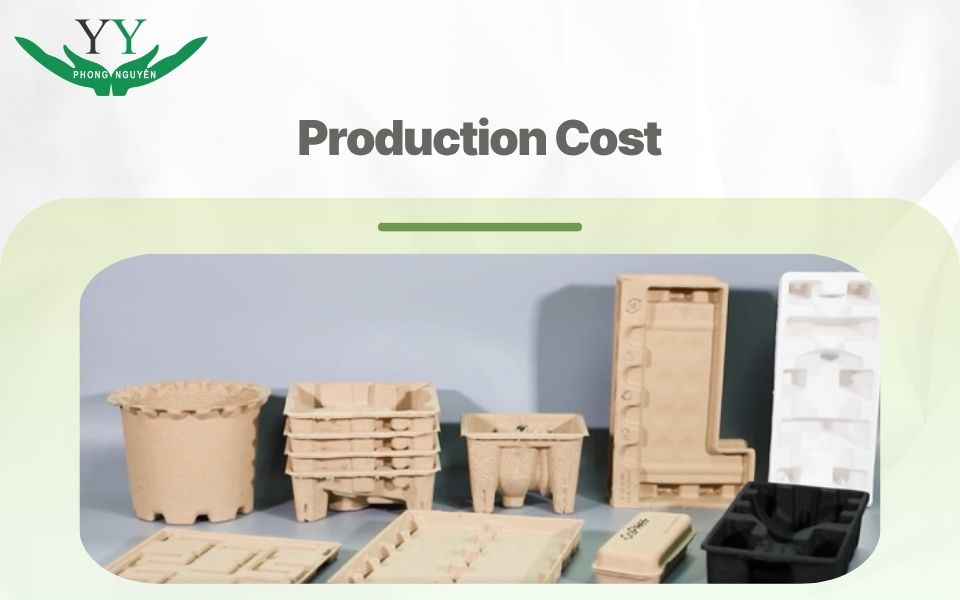
On the other hand, dry press molded pulp uses less water, and the production process is faster due to the application of high temperatures to rapidly evaporate the water. This helps save energy and reduce production time, thereby lowering drying costs and post-production processing.
Conclusion
The choice between wet press molded pulp and dry press depends on the intended use and specific requirements of the product. Wet press molded pulp is the ideal choice for products that need high detail, aesthetics, and good protection during transportation, while dry press molded pulp is the optimal choice for products requiring high durability, fast production, and lower costs. We hope Phong Nguyên has provided useful information about the differences between wet press and dry press molded pulp, helping you better understand the production process, advantages, and disadvantages of each type of pulp.

